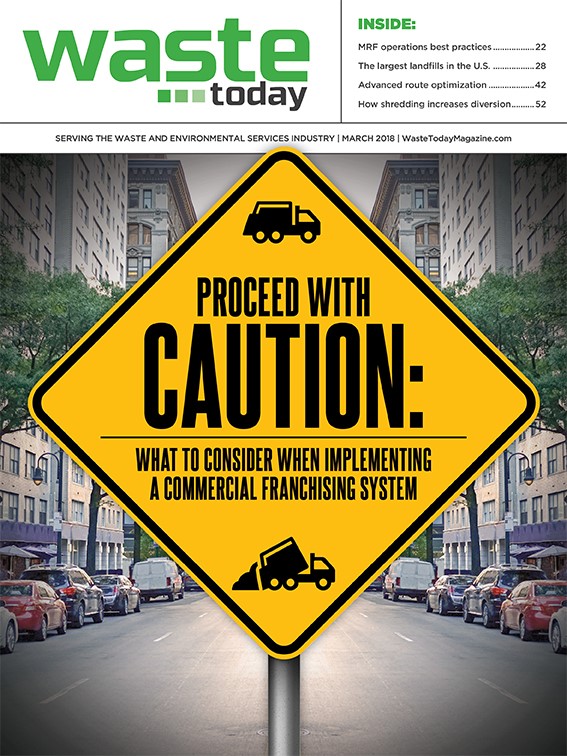
One of Gershman, Brickner & Bratton Inc.’s (GBB’s) current assignments is working with a top 50 U.S. city on how to divert more commercial waste from disposal to recycling or reuse. In this community, the saturation of commercial recycling collection is very low. Why is this? Businesses visited in the field had three concerns: extra cost for recycling service, a constant need for training due to turnover and employees’ time spent sorting recyclables. Many local governments have been hesitant to burden businesses and exacerbate these concerns with regulations. Those recycling requirements that do exist are difficult and resource-intensive to implement and manage.
We have researched several commercial programs across the country as part of this project. At the direction of the client, and in the interest of innovation and the best net benefit for the environment, our research has sought out methods to incentivize or induce commercial recycling beyond mandatory recycling service.
Our field observations in the city in question showed that most of the big-box stores and larger shopping centers have recycling collection service, consistent with our observations in other cities and counties throughout the country. Notably, the bulk of businesses in this city are small businesses located in small commercial centers. Service is segmented and available space for containers is extremely limited. The project is looking at how to reach these small businesses and develop different ways to reduce the amount of waste they dispose.
A business waste stream in 2018 may not conform with a “universal” approach, but it might be perfect for joining a circular economy. For example, waste products from microbreweries can be used for animal feed and other products. Other options include focusing on source-separated organics, designing the use of nonrecoverable or disposable products like plastic cutlery or single-serving coffee pods out of the business operations or encouraging businesses to right-size their garbage containers in favor of single-stream recycling or mixed waste processing.
Businesses also benefit indirectly from solid waste management systems with robust diversion. Improved systemwide economics result in improved pricing for collection service. For those in manufacturing, wholesale, retail, creative industries and other users of raw materials, greater availability of recovered materials can improve the greenness of the supply chain. And economic development programs that can boast of robust sustainability programs are on a stronger footing to grow the local economy. Outreach and education materials should communicate these business points to commercial generators.
Of course, support and outreach programs like these have a cost. Outside of cities with direct service provisions, system benefit charges are an equitable way to assess fees equitably that sustain these services. They are calculated in different ways, including by building use, occupied square footage or other metrics. They are typically intended to reflect the waste generation of the ratepayer. The best systems allow high-performing recyclers or waste reducers to appeal their assessments and realize a return for disposing less waste than anticipated.
We expect business recycling, along with multifamily and organics, to continue to be crucial to moving the needle on recycling. We have seen that the commercial sector, combining multifamily and business generators, can account for about half of the waste generated in a community. Residential recyclers can’t carry the entire burden for recycling goals. The research and consideration ongoing in our current assignment could well benefit many other cities across the country.

Explore the March 2018 Issue
Check out more from this issue and find your next story to read.
Latest from Waste Today
- US Composting Council grant will fund data collection
- Enviri releases annual ESG report
- Waste Connections enjoys income, revenue boosts
- Machinex recognized as Recycling Equipment Innovator of the year
- WM announces solid Q2 growth
- Reworld partners with Genpact
- Waste Pro earns favorable financing rating
- Amberjack announces exit from investment in Best Trash





